The Summer House at Warnford Park: Inside the walls of 'One of England’s most romantic follies'
The Summer House at Warnford Park is an 18th-century bath house in a quiet corner of Hampshire that has found a new life as an idyllic weekend retreat, discovers Cosmo Brockway.
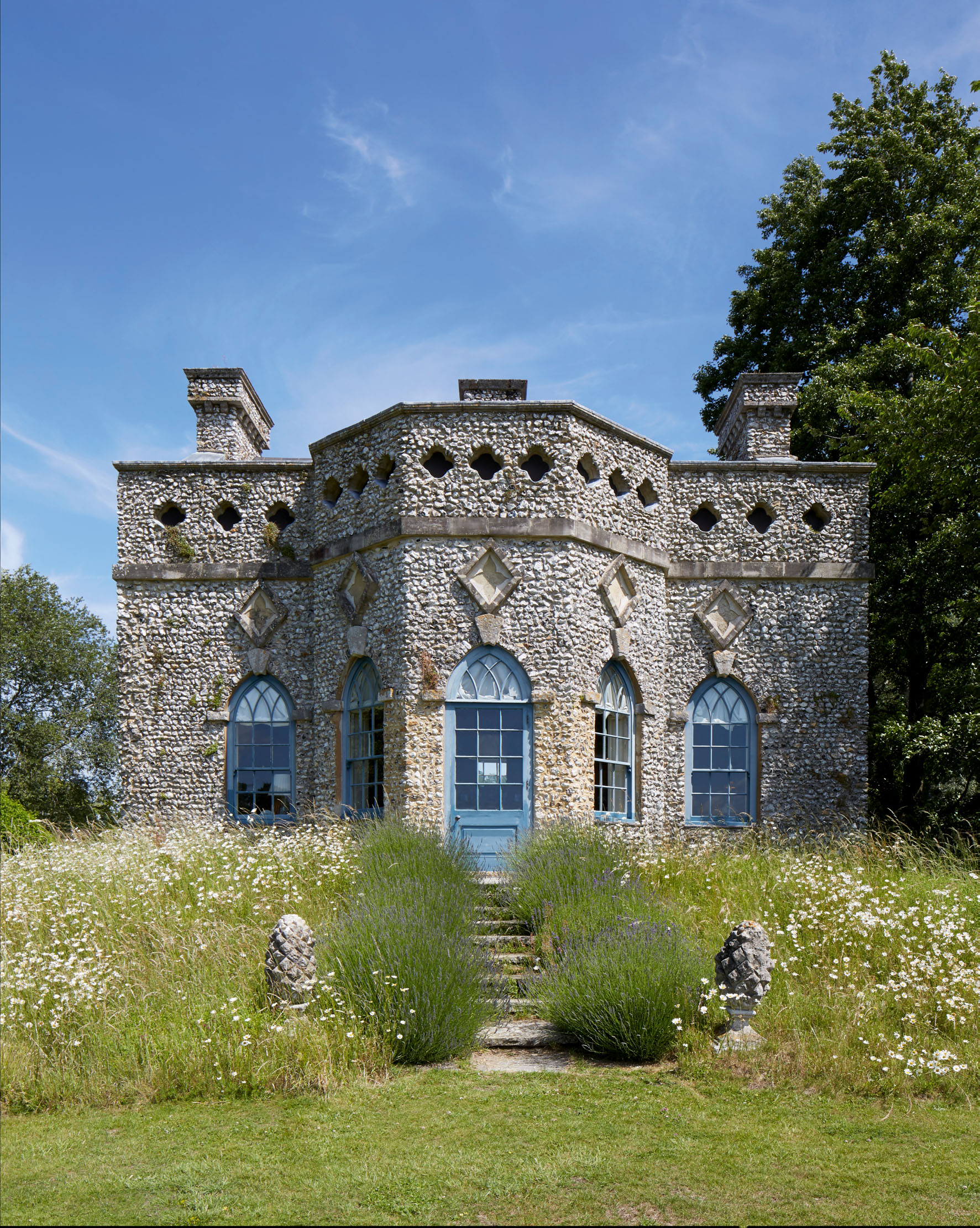

What do an Irish countess, an American decorator and a Catalan lampshade designer have in common? They have all had a hand in the fortunes of one of England’s most romantic follies. The Summer House, hidden away in Hampshire, is a flint-stoned eyecatcher that its owner William Thuillier uses as a weekend retreat from London with his partner, Alvaro Picardo, a decorative artist who paints lampshades, and their Romanian rescue hound, Henry.
Mr Thuillier relishes the fact that it is a world away from his urban life, which is spent discovering Old Masters. Having started his career at Sotheby’s and then worked as a director of his own Bond Street gallery, he has been well-placed to delve into the authentic details needed to re-create the spirit of this miniature Georgian gem.
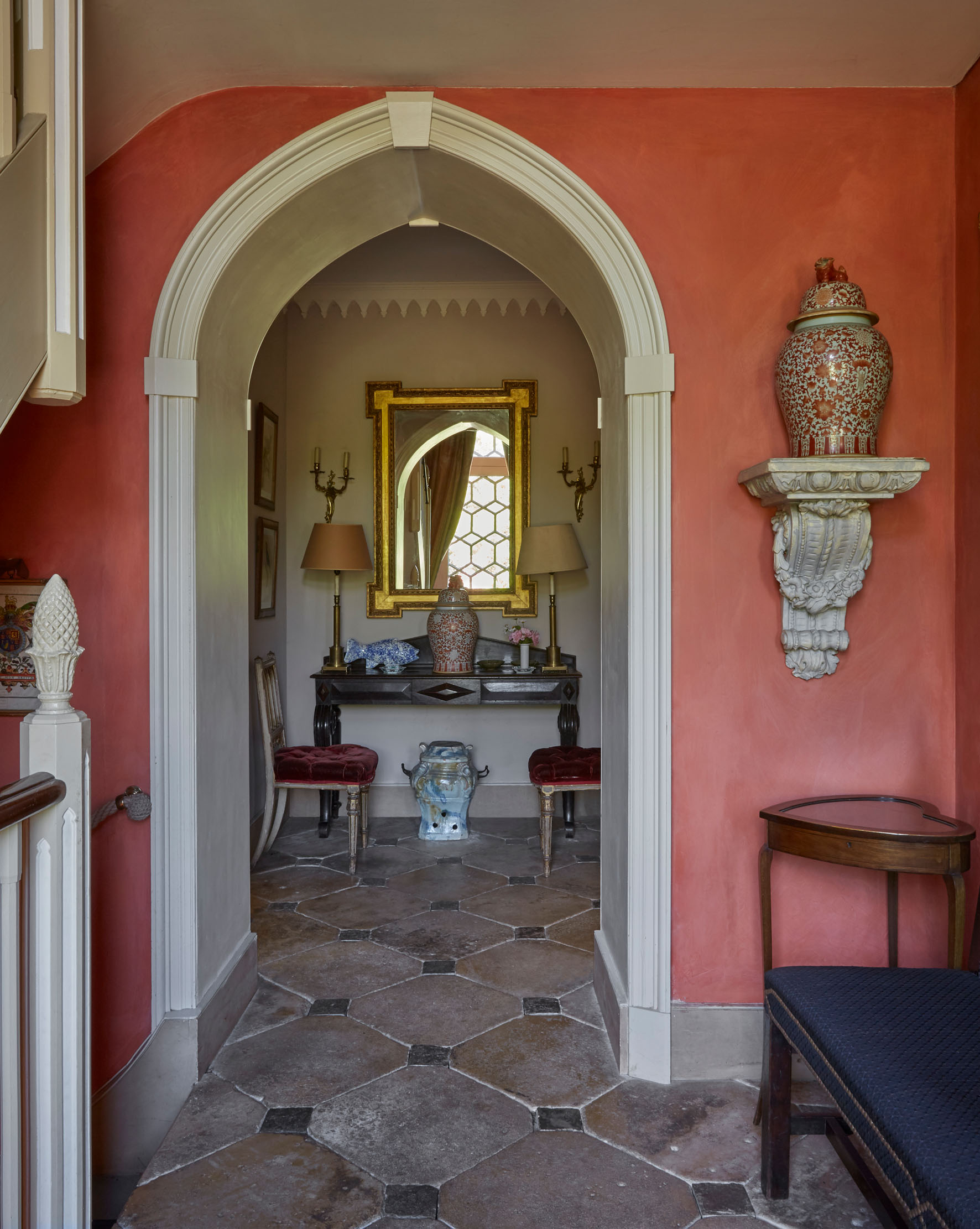
It was Mr Thuillier’s late partner, interior decorator Robert Perkins, who found what he describes as ‘a lovely, odd little house overlooking a lake’. Every designer in the country had been to look at it, but ‘no one was mad enough to take it on, until we came along’. The estate setting envelops the Summer House in birdsong stillness: ‘Not least thanks to the local village apparently having been moved, stone by stone, to the other side of the lake by French prisoners of war during the first Napoleonic War. I thank them most days for the serenity we have now,’ jokes Mr Thuillier.
The folly began life in the 1760s as a whimsical bath house for Lady Mary de Burgh, sister of the 10th Earl of Clanricarde. The de Burgh family were from the west of Ireland and evidently had an eye for the Picturesque. Having bought Warnford Park as his English estate, the Earl hired Capability Brown to landscape the demesne into a fashionably bucolic mise en scène. Very little remains of the house, estate buildings and the now-lost Hermitage (described as ‘that miserable bauble’ by a visitor), which was turned into a Victorian walled garden.
Thankfully, the Summer House overlooks the last clump of Brown’s original planting, seen across the glistening lake. Lady Urania, the redoubtable thrice-married wife of the 1st Marquess (nephew of the bathing Lady Mary), took on the folly and installed a double-storey hall, dated by John Fowler to 1810, and entrance steps, which remain.
Mr Thuillier remembers his first impression of the folly as ‘a pile of stones, this near-ruined Gothic bathhouse, with a local couple living in it as if in Darling Buds of May, all lino floors and wandering goats, but we fell in love with it’. Having acquired it in 1985, the couple did not have much time there before Perkins passed away in 1992, but Mr Thuillier resolved to persevere with their vision — which included returning the rooms to their original height.
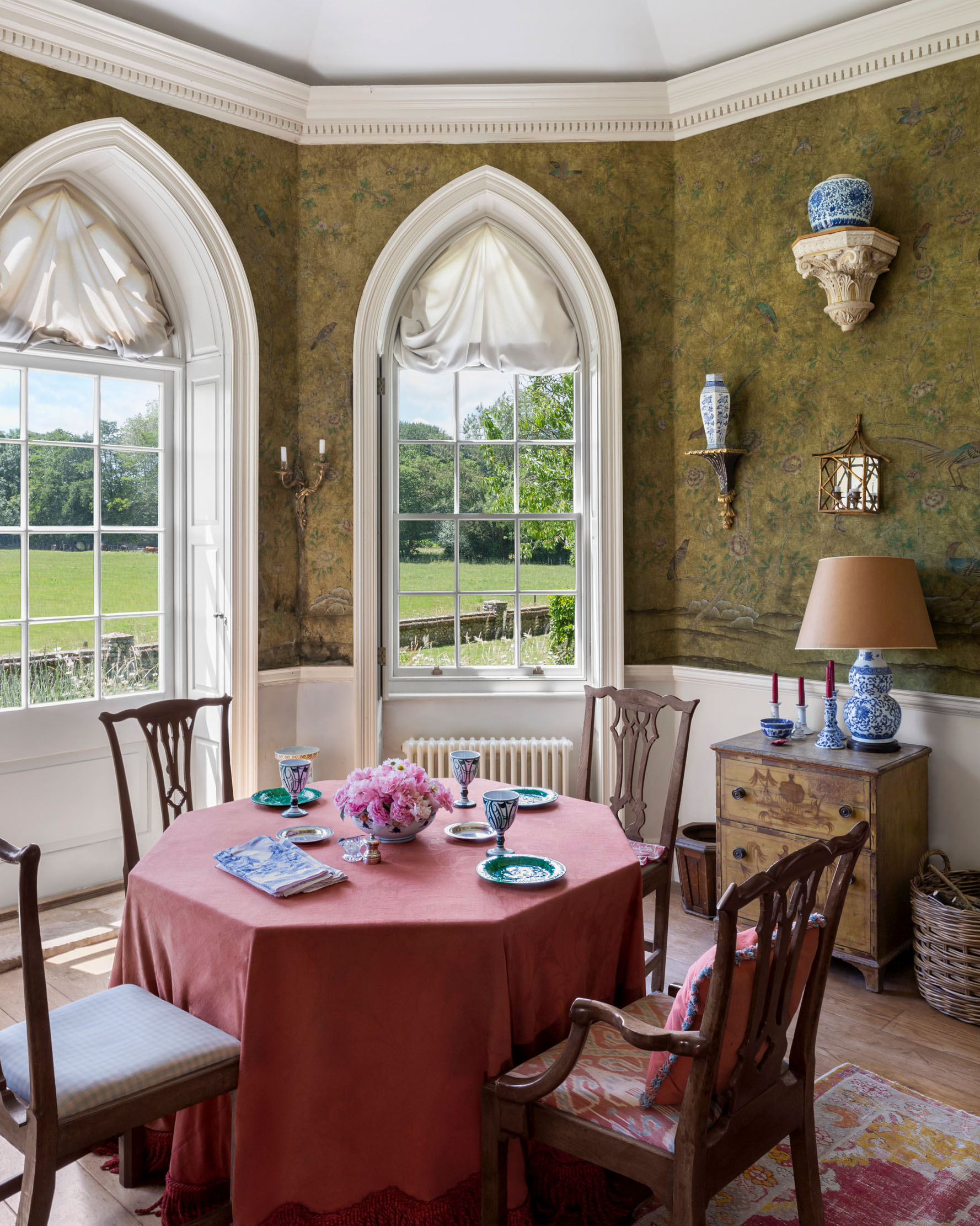
An early issue was finding someone willing to take on a job that was both small and arduous, thanks to challenges such as the water running underneath the old bathing room that engendered constant damp. A saviour was found in the form of a local architect, who had the unusual distinction of being one of Hitler’s last stormtroopers. According to Mr Thuillier, he ‘escaped a train bound for a Siberian camp and somehow made his way to Petersfield, our local town. He was a machine of efficiency and we could not have done it all without him’.
Sign up for the Country Life Newsletter
Exquisite houses, the beauty of Nature, and how to get the most from your life, straight to your inbox.
The folly’s story is rich with such anecdotes: ‘Robert was a perfectionist, so it was slow. He loved to say “the devil is in the detail” and had exquisite taste. He left a decorating scheme that I stuck to religiously.’ There were some haphazard moments — a car trip to Paris to collect the exact curtain fabric ordered by Perkins proved futile due to French red tape, so the textiles specialist Claremont came to the rescue.
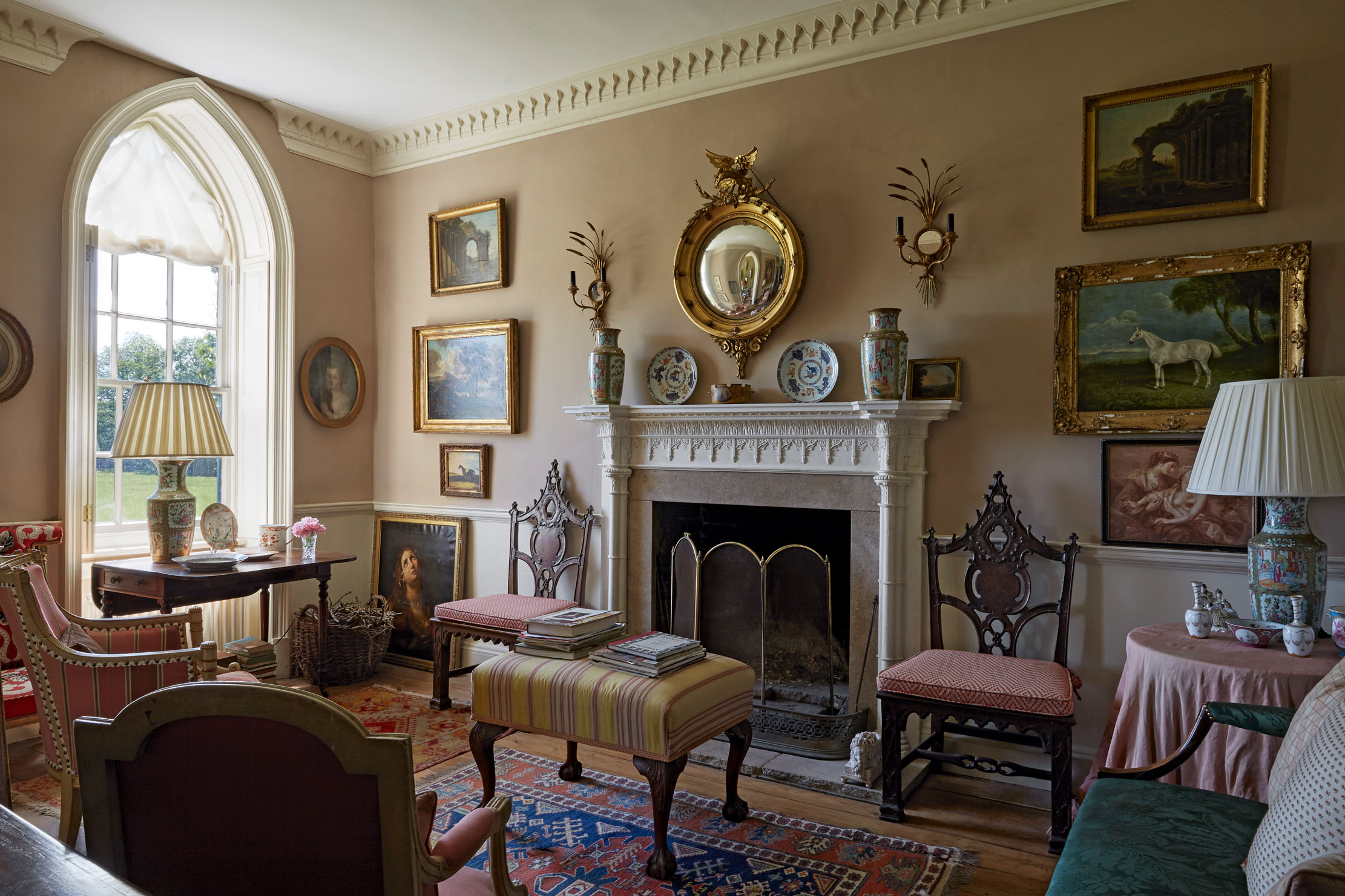
Over the years, the interiors have settled into an elegant apogee of everything a folly should be. The south-facing position allows for rooms, of pleasing symmetry, to be flooded with sunlight. The Gothic windows overlook the long terrace, possibly the vestiges of ‘a medieval archery butt’ and a ha-ha before the lake.
Every detail is considered and harmonious, from the fireplaces designed by the eccentric 18th-century landscape designer and writer Batty Langley in the octagon room and the drawing room to the Smoked Trout walls hung with Regency convex mirrors and Mr Thuillier’s many pictures. Wallpaper from De Gournay wreathes the dining room in Orientalist atmosphere.
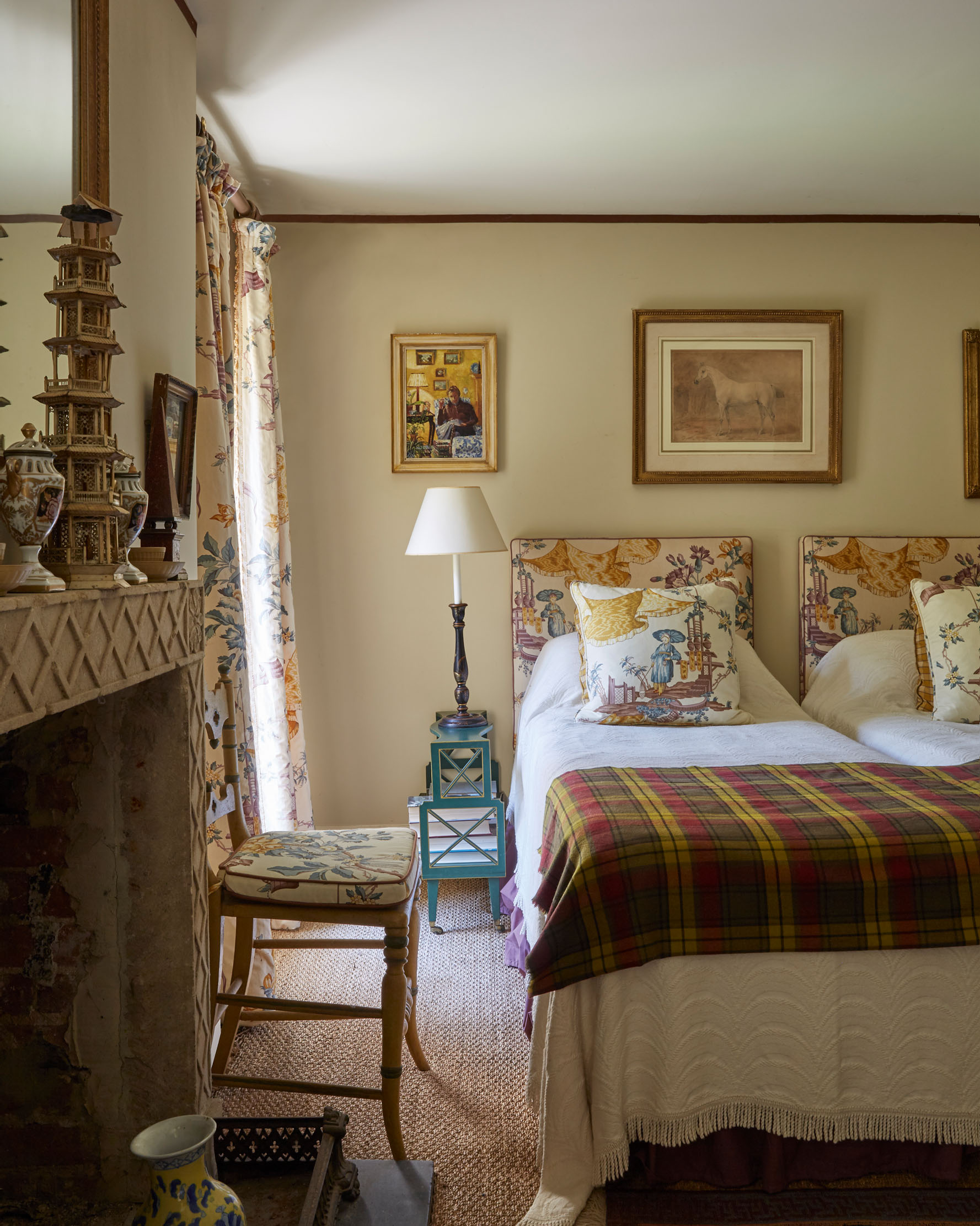
This cohesion extends to the garden, where lines are laid to pleasantly draw the eye, with no rude splashes of colour.
Mr Thuillier admits to subscribing to the David Hicks school of garden thought. The late designer once famously remarked of a friend’s creation: ‘Such a hideous garden, it has flowers.’
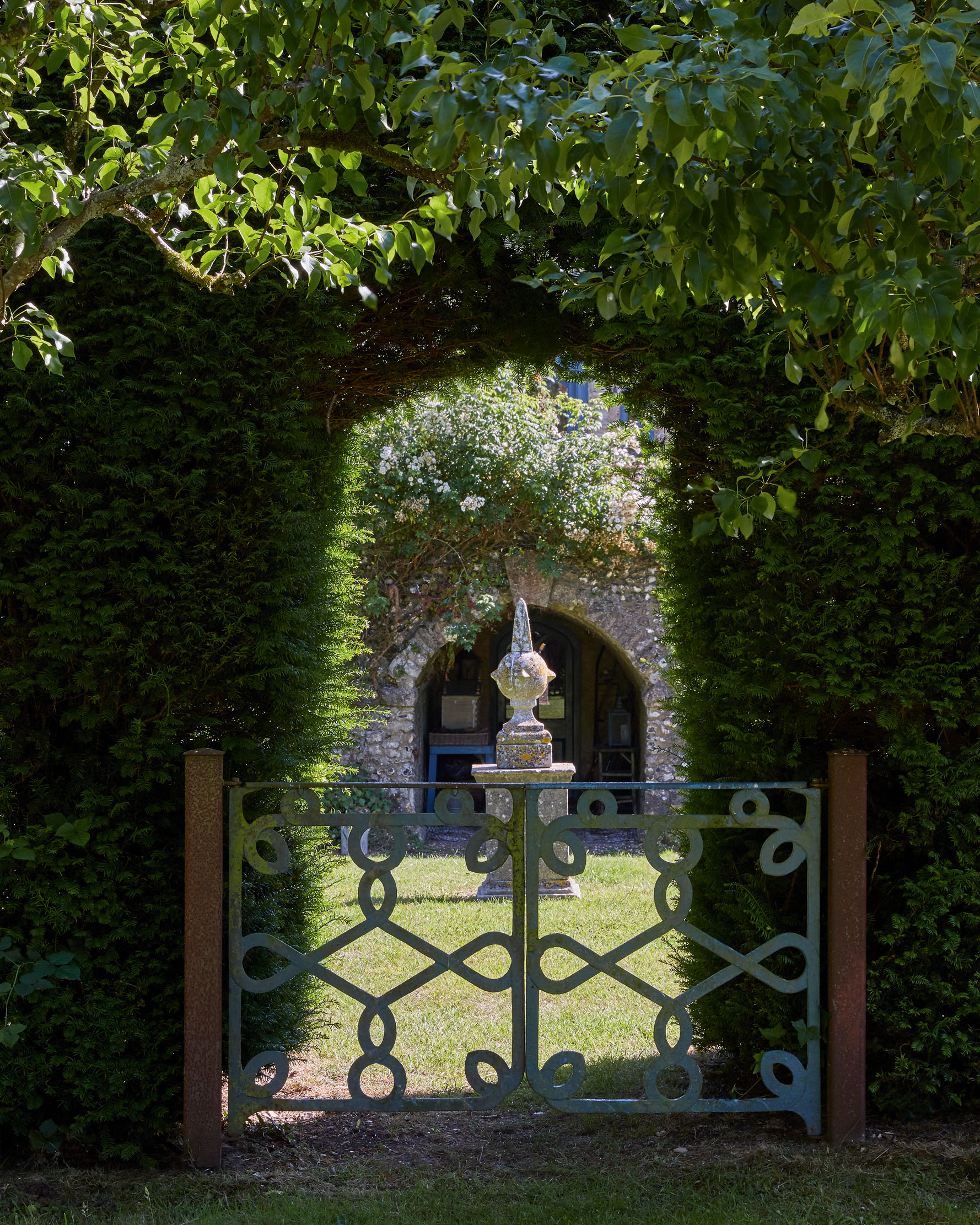
The Summer House nestles among yew and Portuguese laurel hedges, trees and stone urns to complement the glorious view up to Old Winchester Hill. Messrs Thuillier and Picardo enjoy tours from visitors and being ‘squireen’, to use a delightfully Irish expression, of this timeless corner of the Meon Valley.
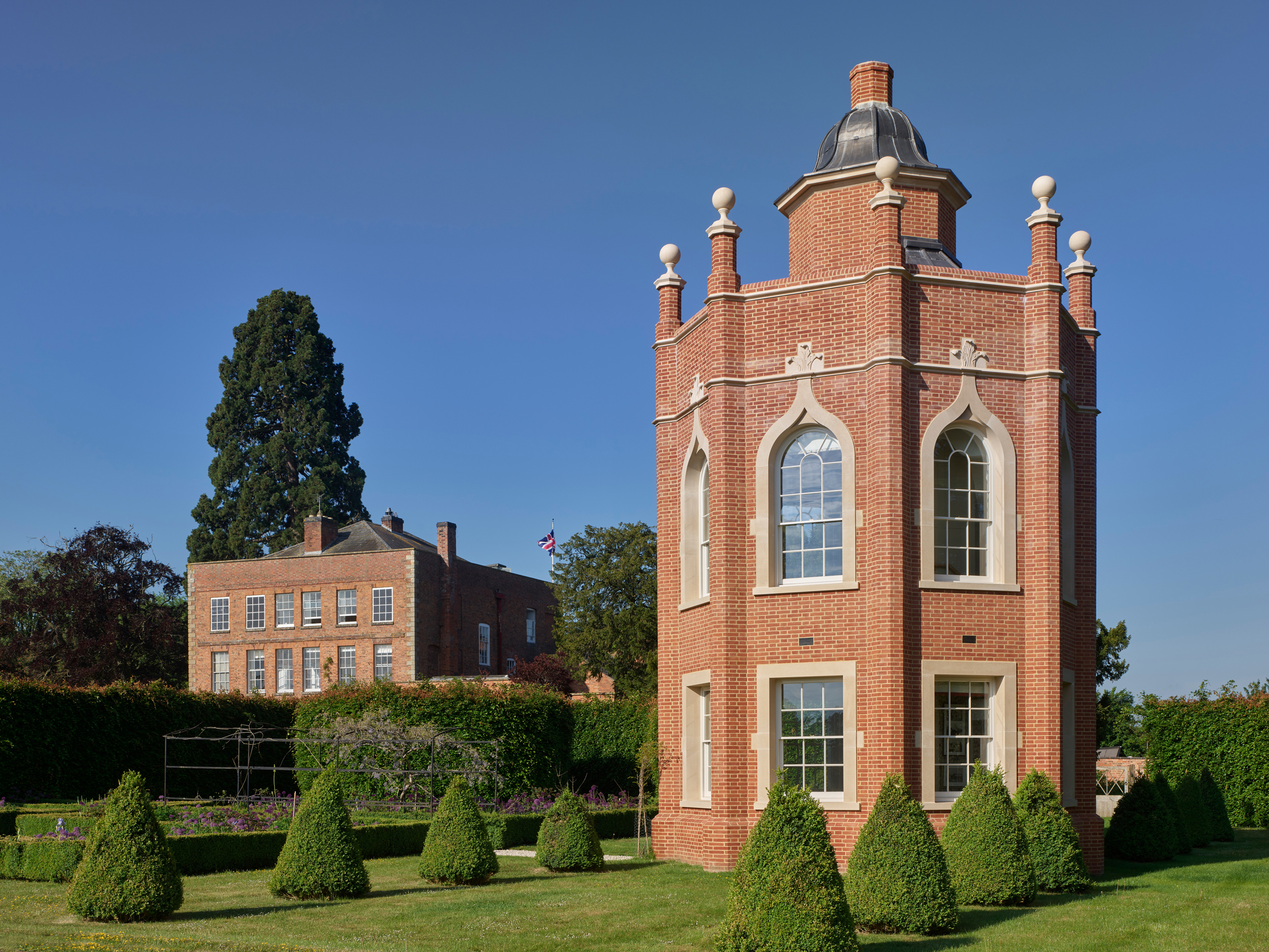
The rather wise folly at Wolverton Hall: 'There isn’t a detail that I don’t think is extraordinarily deft and beautiful'
The new garden folly at Wolverton Hall in Worcestershire — owned by Nicholas and Georgia Coleridge — is inspired by
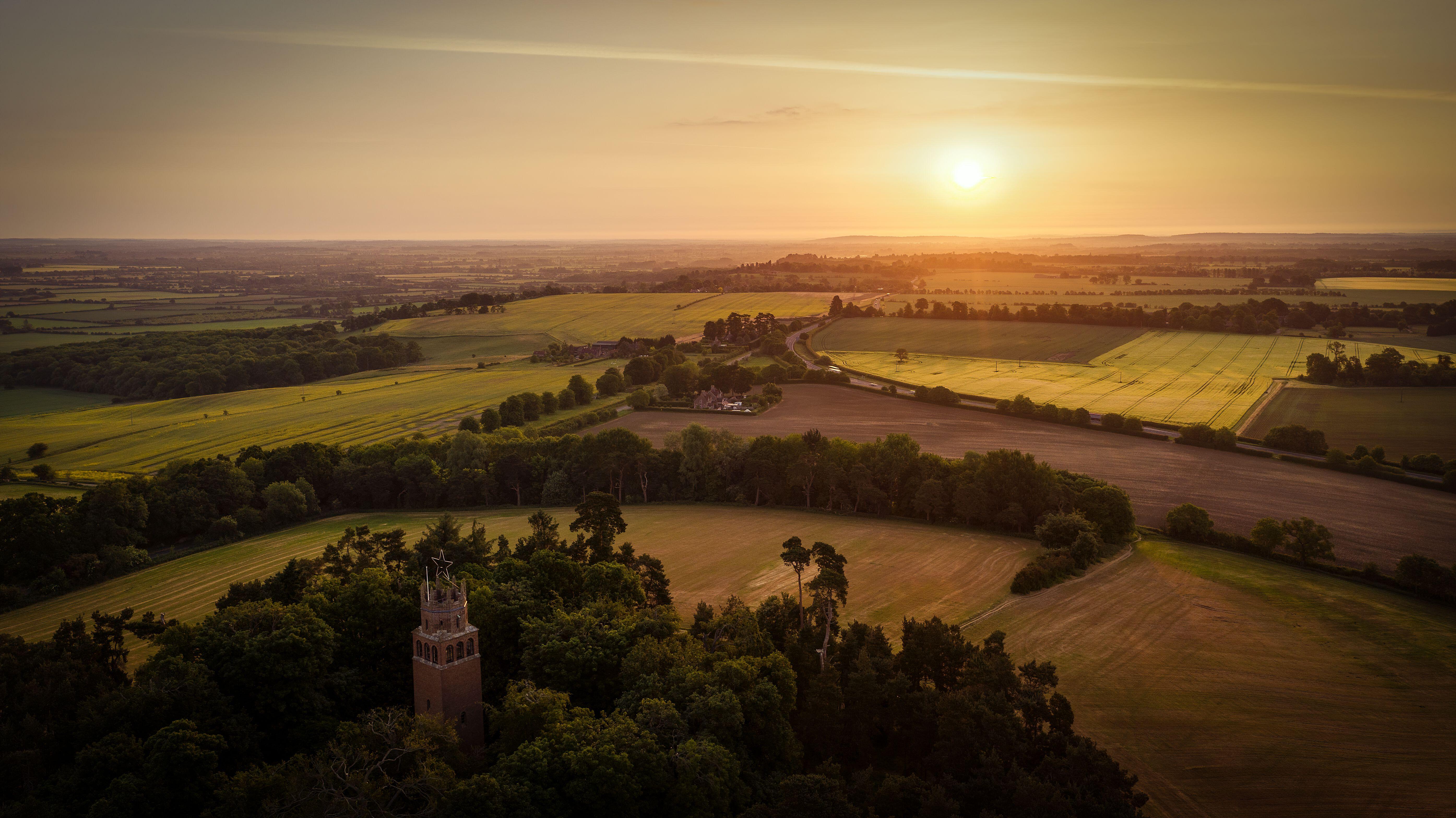
Faringdon Folly, Oxfordshire: A Gothic tower built in the 1930s by 'the last great eccentric'
Atop Folly Hill, Faringdon Folly is just the latest landmark at a spot with an astonishing mix of history.
Country Life is unlike any other magazine: the only glossy weekly on the newsstand and the only magazine that has been guest-edited by HRH The King not once, but twice. It is a celebration of modern rural life and all its diverse joys and pleasures — that was first published in Queen Victoria's Diamond Jubilee year. Our eclectic mixture of witty and informative content — from the most up-to-date property news and commentary and a coveted glimpse inside some of the UK's best houses and gardens, to gardening, the arts and interior design, written by experts in their field — still cannot be found in print or online, anywhere else.
-
 'To exist in this world relies on the hands of others': Roger Powell and modern British bookbinding
'To exist in this world relies on the hands of others': Roger Powell and modern British bookbindingAn exhibition on the legendary bookbinder Roger Powell reveals not only his great skill, but serves to reconnect us with the joy, power and importance of real craftsmanship.
By Hussein Kesvani
-
 Spam: The tinned meaty treat that brought a taste of the ‘hot-dog life of Hollywood’ to war-weary Britain
Spam: The tinned meaty treat that brought a taste of the ‘hot-dog life of Hollywood’ to war-weary BritainCourtesy of our ‘special relationship’ with the US, Spam was a culinary phenomenon, says Mary Greene. So much so that in 1944, London’s Simpson’s, renowned for its roast beef, was offering creamed Spam casserole instead.
By Country Life